Search Images
Browse Content (p. 1048)
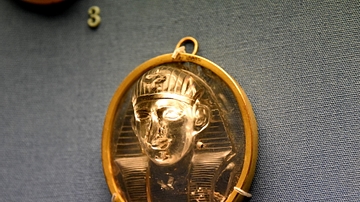
Image
Cameo of an Egyptian King
This rock-crystal cameo depicts a king in an Egyptian style; popular in Italy, where it was probably made. Roman period, 1st century CE. (The British Museum, London).
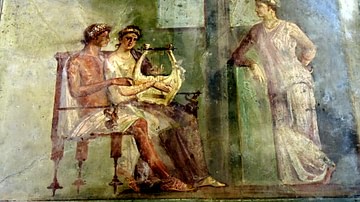
Image
Pompeii Fresco of a Woman Playing a Lyre
This panel, once identified as a music lesson, probably depicts a scene of love, set inside a house. A woman playing a kithara (a type of lyre) sits with her lover who gazes adoringly at her. From Pompeii, in modern-day Italy. Roman period...
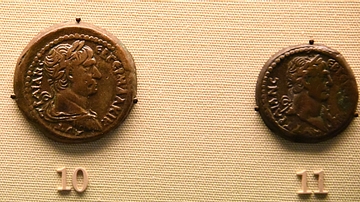
Image
Bronze Drachm and Half-Drachm of Trajan
The bronze drachm of Trajan (r. 98-117 CE) on the left, minted 112-113 CE, represents one of the denominations produced at Alexandria. The half-drachm on the right was minted in 111-112 CE at Alexandria also. (The British Museum, London).

Image
Alex Hoegh Andersen as Ivar the Boneless
Alex Høgh Andersen as Ivar the Boneless from the TV series Vikings.
Photo © The HISTORY Channel

Image
Kaupang
A view of Kaupang in Norway, site of a Viking emporium from c. 780 to c. 950 CE.
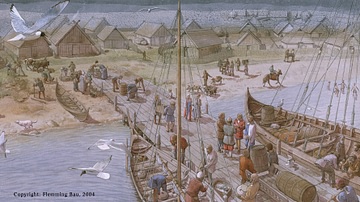
Image
Kaupang Illustration
An illustration showing the emporium of Viking Kaupang, Norway, in use 780-950 CE.

Image
Coin of King Gelimer
A silver 50 denari coin of the Vandal king Gelimer (r. 530-534 CE). (Classical Numismatic Group, Inc. http://www.cngcoins.com)
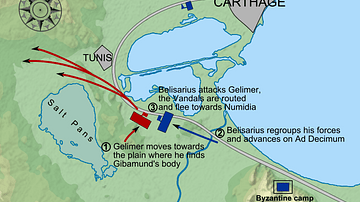
Image
Map of the Battle of Ad Decimum
A map showing the final stages of the Battle of Ad Decimum near Carthage, North Africa which took place in September 533 CE. It was the first major battle of the Vandalic War (533 - 534 CE) between the forces of the Byzantine Empire led by...

Image
Clive Standen as Rollo of Normandy
Clive Standen as Rollo of Normandy in the TV series Vikings.
Photo by Jonathan Hession/HISTORY - © 2015 The HISTORY Channel
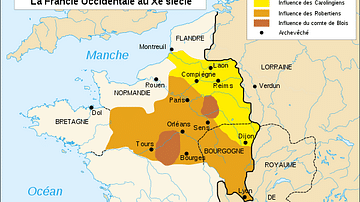
Image
Map of France, 10th Century CE
A map of France in the 10th century CE.